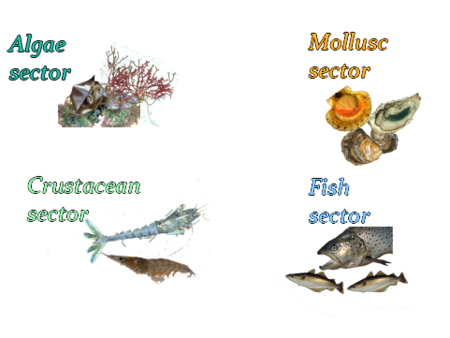Triploid oysters
Aquaculture fact sheet - 01 November 2004
http://en.aquaculture.ifremer.fr/Info.-Card
This info-card was updated in 2011 but not yet translated. See the French version.
Progress
Advances in biology and genetics have provided an opportunity to "improve species" with respect to disease resistance, quality and growth rate.
Scientists use three very different techniques to enhance species performance :
- selection by crossing the most efficient individuals in the population
- polyploidization (topic of this fact sheet)
- transgenesis (GMO)
Objectives
The overall aim of the IFREMER Triploid Oyster Program is to obtain sterile oysters. Diploid oysters (2n = with a total of 20 chromosomes) expend almost ? of their energy during the reproduction process and utilize their sugar reserves (glycogen and glucose) for gamete production. By triploidization (3n), this energy is reoriented for use in other functions such as growth.
At Marennes-Oléron, CREAA produced triploid oysters which on average weighed 15% more than diploid control oysters at 2 years old and 41% more at 3 years old (studies conducted from 1995 to 1997).
Complementary studies showed that the rearing cycle can be shortened by 6-24 months relative to the reference cycle, depending on the culture period and method used.
At Thau, IFREMER conducted tests and obtained a triploid oyster that could be marketed at 9 months old.
Triploid oysters are not GMO*
Through different types of polyploidization, the number of chromosome sets transmitted by the parents to their offspring is increased—so no new genes from other species are inserted in the organism.
Polyploid plants and animals (with more than two genomes) can be found in the natural environment, e.g. wheat (6n), potato (4n), banana (3n) and seedless clementine (3n). So this is a natural "innovation" that humans have simply "controlled" in order to make effective use of specific associated traits, e.g. sterility in triploids (seedless clementines, oysters that are non-milky and/or have an enhanced growth rate).
Production
Triploid oysters (3n) are obtained by crossing female diploid oysters (2n) and male tetraploid oysters (4n). The triploid oyster production procedure complies with the guidelines drawn up by CNC, DPMA and IFREMER.
Oysters can be consumed throughout the year, regardless of whether they are diploid or triploid. However, the quality of triploid oysters remains constant year-round, which is an attractive feature for some consumers.
Precautions
Natural polyploid oysters can be found, but tetraploid broodstock should be maintained in a confined environment in order to hamper dissemination. This precautionary measure is essential since the potential environmental impact of the release of tetraploid in the natural environment is still unknown.
This precautionary measure is supplemented with biomonitoring in the natural environment.
In contrast, the use of sterile triploids is sometimes recommended to hamper hybridization of cultured oysters with wild-types.
*GMO - genetically modified organism
GMOs are obtained by transgenesis. By this technique, genes and other genetic material contained in chromosomes are transferred from one species to another, or from one site to another within the same organism, and then they are expressed in the new environment.
A novel trait can thus be inserted in an organism, which could not be done simply by hybridization techniques. This strategy has, for instance, led to the development of new corn varieties that are resistant to corn borer pests, and of crops that are herbicide resistant.



